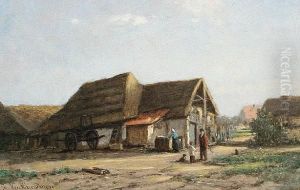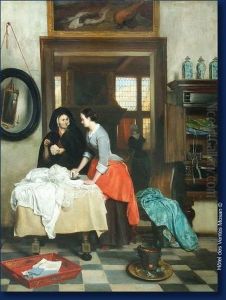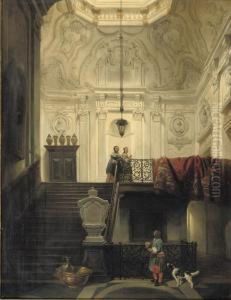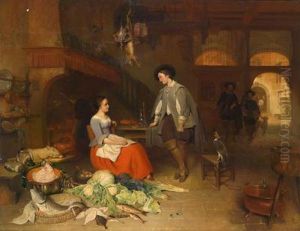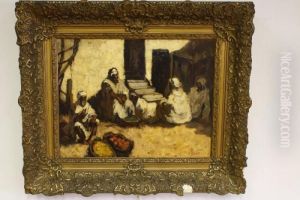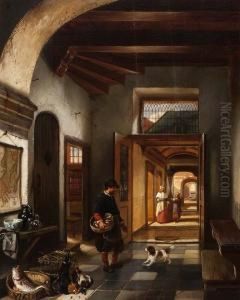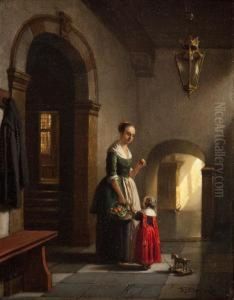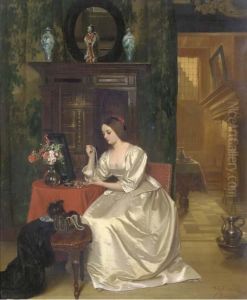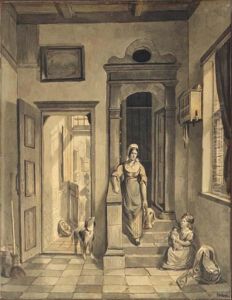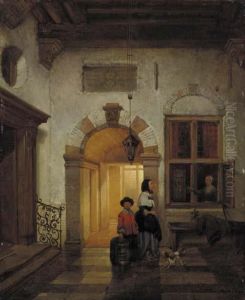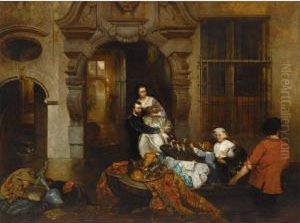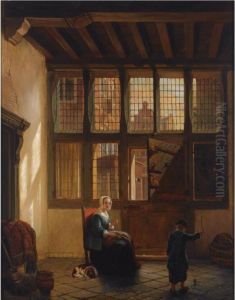Hubertus, Huib Van Hove Paintings
Hubertus 'Huib' van Hove was a 19th-century Dutch painter and a prominent figure in the art scene of his time. Born on May 4, 1814, in The Hague, Netherlands, van Hove came from a family with a rich artistic background. His father, Bartholomeus van Hove, was a well-known painter and theatre decorator, which naturally influenced Huib to follow in his footsteps.
Trained by his father and later by the landscape painter Andreas Schelfhout, Huib van Hove developed a strong foundation in the romantic style of painting, which was prevalent during the early part of his career. He initially specialized in painting architectural interiors and was particularly adept at rendering the play of light and shadow in these spaces. He managed to capture the tranquility and the meticulous details of Dutch homes and public buildings of his era with a remarkable sense of realism.
Van Hove moved to Antwerp in 1847, where he continued to work and develop his artistic style. During his stay in Belgium, he was exposed to the Belgian romantic school, which further influenced his work. His paintings often depicted scenes from history and literature, as well as contemporary life. He was also known for his seascapes and occasionally painted portraits.
In 1855, van Hove returned to The Hague and became a member of the Pulchri Studio, an important art society at the time. His work was well-received, and he was respected by his peers for his technical skill and his ability to capture the essence of his subjects. Over the course of his career, he participated in numerous exhibitions and won several awards.
Huib van Hove was not only a painter but also an educator. He took on the position of a professor at the Academy of Fine Arts in The Hague, where he taught many students who would go on to become notable artists themselves.
Huib van Hove passed away on November 14, 1865, in The Hague. His legacy lives on through his contributions to Dutch art, particularly in the field of interior and architectural painting. Today, his works can be found in various museums and private collections, where they continue to be appreciated for their historical value and artistic merit.


